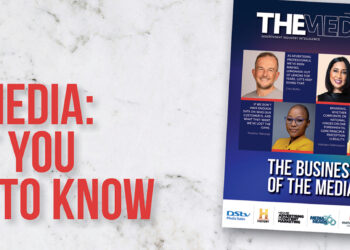We are forever tethered to our mobile devices. All research leads to smartphones reaching or exceeding 50% of the market by the end of the year, writes Jason Heller for MediaPost.
The prospect of engaging consumers with rich brand or product experiences that provide utility, facilitate discovery, commerce and social sharing on demand, while on the go or near point-of-sale, is powerful. QR codes are appearing everywhere from product tags in retail, to out-of-home ads, direct mail and catalogs, and the windows of local businesses on Main Street USA.
Unfortunately, most executions, well … suck
Many marketers and agencies get caught up in the technology, making the QR code a tactic in search of a strategy. Success with QR codes is predicated on developing clear objectives and a strategy that aligns with consumers’ mobile usage, and provides a reason for consumers to engage with you. Why is that such a foreign concept to some marketers?
To complicate matters, we are still in a long-drawn-out, chicken-and-egg phase of consumer scanning. The initial experiences that consumers have with scanning will begin to shape their expectations and excitement, or lack thereof. Comparison-shopping by scanning UPC codes is already a popular behavior, which is a perfect precursor for scanning as a point of additional engagement.
Hurdles – real or perceived?
Granted, in order to scan, consumers have to download an app, a process not ideally streamlined. But in reality, consumers are savvy and download billions of apps. We just need to provide consumers with great experiences and reasons to be excited and share the experiences with others. While it’s a shame that exponentially more consumers have played “Angry Birds” than scanned a QR code, it’s important to remember that mobile barcodes are a response mechanism — just another way for consumers to choose to engage with us.
Scanning by the numbers
There is a distinct void of mobile barcode market research that normally supports the growth of a market and fosters adoption among marketers. So I commenced my quest to try and estimate the size of the market. Thanks to David Javitch, vice president of marketing at ScanBuy, arguably the largest QR code provider, for providing enough data for me to make some directional estimates. A new data report will be available later this week.
There are an estimated 45 million installed apps that have scanning capabilities. The majority of these apps are not natively QR code readers, but barcode scanners that evolved from comparison shopping scanner apps like Google Shopper, Amazon, eBay’s Red Laser and Shop Savvy, in addition to scanners that are built into branded apps. An estimated 25% of installed apps are actively used.
Scanbuy is reporting: Between 2 – 4 million active monthly users. Of course there is no standard definition of “active,” but it’s great to finally see an active number even if undefined.
· An estimated market share of about 20%. So we can estimate the overall market to be roughly 10 million consumers scanning monthly. That number jives with the estimate of approximately 25% active usage of all scanning apps.
· More than a scan per second, up from ten scans per minute a year ago. I’ll save you the math — that’s over 2.6 million scans per month and a 600% increase year over year. Scanbuy also sees over 420 000 product UPC scans monthly. That’s a big number for a product that wasn’t initially intended for UPC scanning.
· Over 45 000 codes created last quarter. That’s a lot of potential rich content and engagement — or disappointing experiences. Hope for the former!
Big brands putting skin in the game
While many marketers experiment by integrating QR codes as part of existing marketing creative, several pioneering brands are diving in deep enough to really determine the best ways to engage with mobile consumers.
Best Buy and Home Depot have both rolled out QR codes in a big way as part of their product tags, augmenting the in-store shopping experience. Frito-Lay just rolled out an implementation that utilizes existing UPC barcodes to trigger the same rich experiences that previously were the realm of the QR code. A call to action on packaging and a social media campaign will promote the program. The use of a UPC code in this manner is interesting and makes a lot of sense.
In the longer term, near-field communication (NFC) will become a common mechanism for mobile response, engagement and commerce that will augment and maybe even displace mobile barcode scanning. In the interim, let’s be committed to providing consumers with worthwhile experiences, and we’ll continue to see exponential increases in mobile barcode scanning.
Jason Heller is CEO of AGILITI, a consulting firm focused solely on client-side digital marketing operations management, helping clients foster productive relationships with their agencies and empowering clients to take control of their digital strategy. Follow him at @JasonHeller.
This article republished by kind permission of www.mediapost.com https://www.mediapost.com














